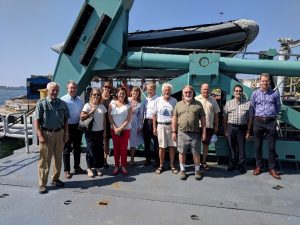The passing on 30 September 2018 in Washington DC of Jeannette Aspden, colleague from IIASA and the Carnegie Commission, elicits a brief written tribute. Celebrations and remembrances of our colleagues have accumulated over the years, and we re-post them here.
Vera Alexander (Remembrance 2023)
Jeannette Aspden (Remembrance 2018)
Robert Herman (In Memory of Robert Herman, 1997)
Robert Kates (The Classification of Robert Kates, 2018)
Alexander Keynan (The Germination of Alexander Keynan, in memoriam, 2013)
Janusz Kindler (Remembrance, 2021)
Joshua Lederberg (In memoriam, 2008)
Joshua Lederberg (A Tribute to the Foresight of Joshua Lederberg, 2009)
Thomas F. Malone (Tom Malone here [poem], 1984)
Andrew W. Marshall, Andrew Marshall and Classics (remembrance, 2019)
Rodney Nichols (2018)
William A. Nierenberg (Memorial Tribute, 2000)
William D. Nordhaus (Getting to know Bill Nordhaus and Climate, 2019)
Fan and Don Ogilvie (“It was fruit“, poem celebrating our friendship)
Arthur L. Singer, Jr. (Old Friends, A Remembrance, 2020)
Chauncey Starr (A 90th Birthday Tribute, 2002)
Oleg F. Vasiliev, 1925-2017 (scroll to second entry past Beck tribute)
Paul E. Waggoner (Thriving Thrift: On the Occasion of Paul Waggoner Appreciation Day, 2013)
Robert M. White (Portrait of Robert M. White in the style of Gertrude Stein, 1979)
Norton Zinder (A Remembrance of Norton Zinder, 2012)
Census of Marine Life, for a personal view of the program, read Jesse’s poem, The Census of Marine Life is about the total richness of the sea, the foreword to Life in the World’s Oceans: Diversity, Distribution, and Abundance, A. McIntyre (ed.), Wiley-Blackwell, 2010

